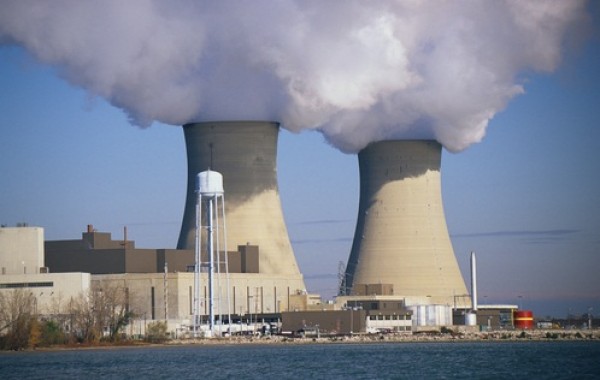In an era of stressed watersheds and aquatic ecosystems rendered fragile by global warming, we’re learning more about our hidden water use. For instance: 42 gallons – that’s the water footprint for the average kilowatt-hour of U.S. electricity as of 2009.
OK, it’s nothing compared to how much water it takes to produce a big, juicy hamburger – that’s at least 4,000 gallons [PDF] – but then again, you consume a lot more kilowatt-hours of electricity in a day than you do hamburgers. Presumably.

In fact, the average U.S. home uses around 1,000 kWh of energy every month, which means – according to a report from the Portland, Ore.-based River Network – it takes an average of 39,829 gallons of water to meet our monthly energy use, five times more than our direct residential use of water.
The staggering water requirements of our current grid electricity are just one more reason to embrace water-sparing renewables, the group argues in “Burning Our Rivers: The Water Footprint of Electricity” [PDF].
“Expanding the deployment of wind energy and photovoltaic (PV) solar power could vastly reduce wateruse conflicts in some regions,” they write.
Some might argue that not all or even most of the water used to make power from traditional sources like coal, nuclear and natural gas is used up in the process of creating the energy. But that ignores one of the great sins of power production, River Network says: once-through cooling.
The water that is used to cool down conventional power plants might largely be returned to its source, but not without repercussions. “Some of this water is evaporated while the majority of this water is warmed up – causing thermal pollution – killing aquatic life, increasing toxic algae blooms and decreasing the sustainability of our water supplies.”
Furthermore, the biggest source of electricity in the U.S., coal, takes this impact a step further because “immense amounts of water are used or polluted to mine, wash and transport coal before it even reaches the power plant, while even more water is used to consumed at the power plant.”
River Network has a lot of recommendations for fixing the problem, including deploying better cooling technologies. But it’s the endorsement of wind and PV that lead its long list.
“Wind and PV solar require virtually no water to generate electricity, and their lifecycle water footprints are far smaller than hydro, nuclear or fossil fuels,” the report states. “The technology exists for wind to provide 20 percent of our electricity by 2024.”

It does take some water to make wind turbines and solar panels, but not much. Weighted by production, River Network puts hydroelectric’s contribution to the total water footprint of electricity at 29,920 gallons; coal’s at 7,143 gallons per megawatt-hour; natural gas at 1,512 gallons/MWh; and nuclear at 2,995 gallons/MWh. PV, meanwhile, comes in at 2 gallons/MWh, and wind at just 1.
“Since the majority of the water used by wind and PV solar is ‘upstream’ (to acquire and process materials for fabrication), manufacturing can be focused in water rich regions without increasing water impacts in dry regions,” the River Network report says.